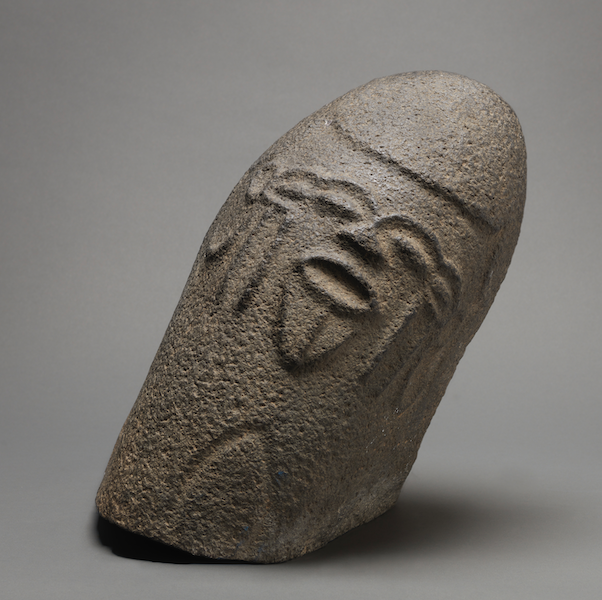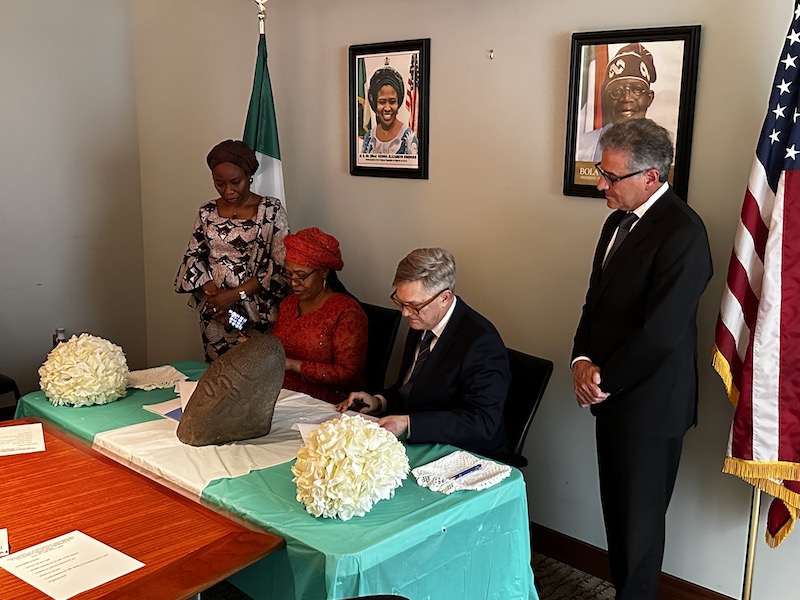
NORFOLK, Va. – The Chrysler Museum of Art and the National Commission for Museums and Monuments Nigeria (NCMM) have collaborated on the restitution of an original Bakor monolith from the village of Njemetop in Cross River State to Nigeria.
In late winter, the Chrysler Museum was made aware of the history of the Bakor monolith through a visit from an outside expert in African Art. Guided by the institution’s professional and ethical standards, the Chrysler Museum further investigated the provenance of the piece and contacted the NCMM. The piece was deaccessioned by the Chrysler Museum’s Board of Trustees, at which time the museum staff began arrangements for the return of the Bakor monolith to the Nigerian government.
“It is the duty of all art institutions to preserve and care for works of art for the benefit of the public, part of which includes thoughtful deaccessioning and restitution,” said the Macon and Joan Brock Director of the Chrysler Museum of Art Erik Neil. “As soon as the Chrysler Museum was made aware of the history of the Bakor monolith, we took swift action to ensure the piece was returned to the Nigerian government. Restitution to the people of Nigeria is the final step in the process.”
Four representatives from the Chrysler Museum traveled to the Embassy of the Federal Republic of Nigeria in Washington D.C. on June 23, for a repatriation ceremony that included Erik H. Neil, Macon and Joan Brock Director; Kirk Levy, Esq., Vice Chair, Board of Trustees; Mark A. Castro, PhD, Director of Curatorial Affairs and Michael Berlucchi, Community and Government Relations Manager. Those from the Federal Republic of Nigeria included H.E Dr. (Mrs.) Uzoma Emenike, Nigeria’s Ambassador to the United States of America; Ambassador Mrs. Mobolaji Ogundero, Deputy Chief of Mission (DCM); Mrs. Tarela Njokanma, Minister (Min); and Mrs. Titilayo Wale-Kolade, Head of Chancery (HOC).

“This decision by Chrysler Museum to return this timeless Monolith is worth emulating. The returning of the magnificent stone, the Akwanshi head, to its rightful home demonstrates adherence to obligation and accountability. Indeed, it is a significant milestone and has opened a new page in the history of your institution,” said H.E Dr. (Mrs.) Uzoma Emenike, Nigeria’s Ambassador to the United States of America. “This event is a testament of the recognition and mutual understanding between the two nations.”
The Chrysler Museum of Art is also collaborating with the Factum Foundation for Digital Technology in Preservation, with the support of the Carene Foundation, on the production of a resin facsimile of the monolith. The museum will use this facsimile as an educational tool for discussing the restitution of cultural objects.
The piece was originally bequeathed to the Chrysler Museum in 2012. Unknown to its original donors and the Chrysler Museum, this monolith was discovered to have been illegally looted from Njemetop, which it occupied for centuries, and was last photographed around 1961. The Njemetop monolith is one of approximately 300 carved basalt and limestone monoliths representing community leaders and ancestor figures. They have been dated to between the 16th and 17th centuries and are unique in the context of Africa.


